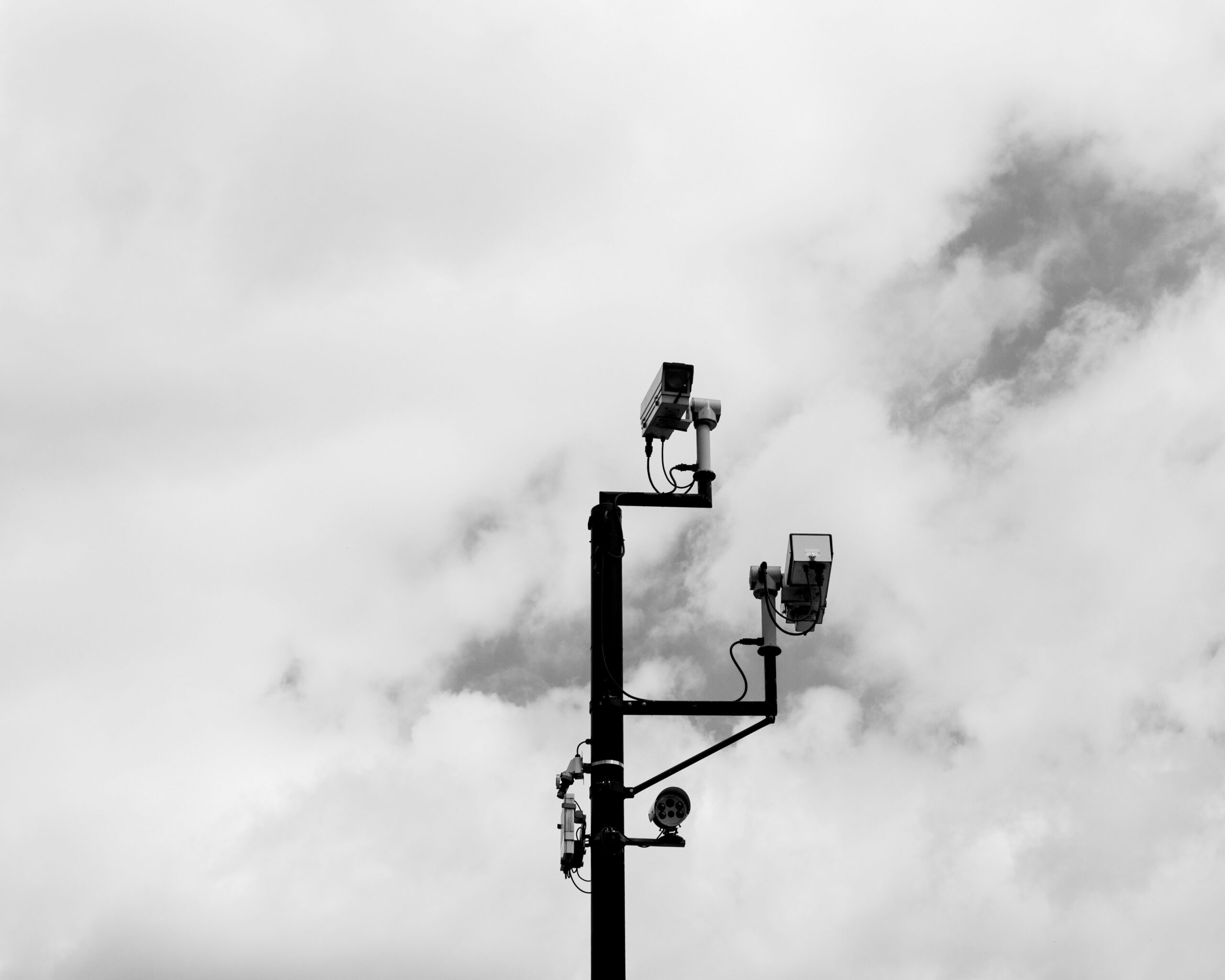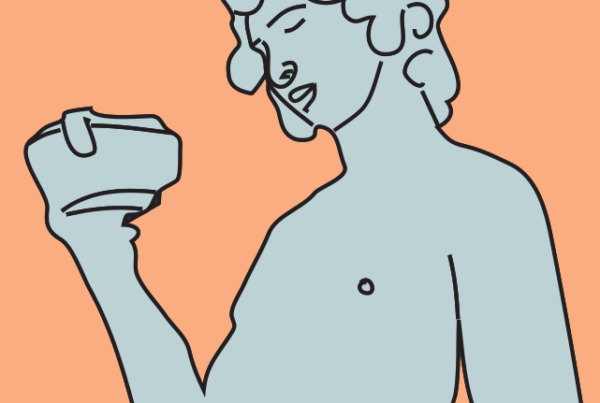
Safety, as many other needs, comes under-appreciated until we lack it. While absolutely fundamental for our well-being and tranquillity, when we are privileged enough to have it, we hardly ever think about it. As safety seems to need some fostering, there are tools to help it flourish. Safety is then faced with the question of privacy, thereby the relationship and balance of these two is a subject to exploration in this article.
Safety, as many other needs, comes under-appreciated until we lack it. While absolutely fundamental for our well-being and tranquillity, when we are privileged enough to have it, we hardly ever think about it. As safety seems to need some fostering, there are tools to help it flourish. Safety is then faced with the question of privacy, thereby the relationship and balance of these two is a subject to exploration in this article.

Photo by Mateusz Majewski on Unsplash

Photo by Mateusz Majewski on Unsplash
I have long wondered what the “WhatsApp buurtpreventie” signs placed in Dutch neighbourhoods stand for. While the meaning behind these signs remained a mystery to me for a considerable amount of time, I would admittedly not dare to engage in any transgressions, let alone text while biking. The signs with the masked thief certainly looked quite alarming. Only when finding sources for this article did I finally learn their hidden meaning. “WhatsApp buurtpreventie”, or WhatsApp Neighbourhood Crime Prevention (WNCP), are groups in which neighbourhood inhabitants share their encounters with incidents, situations they deem suspicious, and warnings regarding matters in their neighbourhood (Mols & Pridmore, 2019). Even though I only encountered this concept after moving to the Netherlands, it is certainly not a Netherlands-specific phenomenon as it also exists in other regions of the world (Dixon, 2018). While one of the main goals of the WNCPs is to promote safety, one has to wonder whether such a mechanism does not produce adverse consequences as well. In terms of their effectiveness in preventing crime, the direct connection between WNCPs and crime incidents is difficult to establish. However, it was found that the rate of burglaries in the municipality of Amstelveen has increased since the founding of digital neighbourhood watch programmes, and other research claims that there is no support for WNCPs preventing local crime (van Steden & Mehlbaum, 2022; Mehlbaum & van Steden, 2018; Smeets et al., 2018). Further research investigating the isolated relationship between WNCPs and crime rates could help provide insight into the association between these two. Thus WNCPs should be approached with carefulness and consideration.
Turning to issues that may arise due to the nature of WNCPs, it has been found that “suspicious” behaviour is often connected to social stereotypes and stigmatisation of specific groups. As the notion of suspiciousness is subjective and as members of neighbourhood watch programmes might be constantly on the outlook for suspiciousness, this can result in excessive social control (Sampson & Raudenbush, 2004; Lub, 2018).
“members of neighbourhood watch programmes might be constantly on the outlook for suspiciousness, this can result in excessive social control”
At the end of the day, the WNCPs are yet another tool of surveillance, despite their mostly nonviolent nature and potential to foster neighbourhood cohesion. While the WNCPs are a relatively new surveillance tool, offline neighbourhood watch programmes have been around since the late 1980s in the Netherlands (Van Noije & Wittebrood, 2008) and there is a broad array of surveillance tools on the map. Perhaps the most pronounced are CCTV cameras. In 2023, there were 313,354 cameras in the Netherlands, with most of them in Amsterdam, amounting to 166.9 cameras per km² (CBS, 2023; Van de Ven, 2023). As CCTV cameras are one of the most visible and noticeable surveillance features in day-to-day functioning, it is interesting to investigate citizens’ attitudes towards them and the emotions elicited.
Ellis et al. (2013) conducted a study in England investigating the experiences of surveillance by citizens. Both pro surveillance and anti surveillance stances were present, and the researchers cite the common initial stances of the participants as ‘if you’re not doing nothing wrong you’ve got nothing to worry about’ versus a Big Brother-like invasion of privacy (Ellis et al., 2013). These initial stances of the participants somewhat shifted towards more ambiguity through the duration of the study as they were asked more questions and provided with more information on surveillance.
On the notion of surveillance being perceived ambiguously, Koskela (2000) argues that surveillance can produce both negative and positive feelings simultaneously. The argument for this paradox is that while surveillance might make one feel safer, it is also a reminder of being under control and subject to surveillance. A person under surveillance is perceived as a potential victim, as the presence of cameras reminds one of potential danger, since the primary reason for camera instalment is increased safety. This can result in depriving a sense of agency which mostly results in unpleasant feelings.
While surveillance strategies undeniably strike a debate about balancing safety and privacy everywhere, in some places the rapid fabrication of new strategies may cause serious concerns. Singapore, a very densely populated city state having the reputation of a worldwide tech hub and one of the safest places in the world, relies heavily on technology to implement surveillance. When I mentioned previously that one of WCNPs’ goals is detecting suspicious behaviour, Singapore took this a step further and implemented autonomous robots to admonish people who engage in undesirable social behaviour (France-Presse, 2021). While this may result in nearly absolute safety and minimal transgressing, it is to be discussed at what value such safety comes.
“while surveillance might make one feel safer, it is also a reminder of being under control and subject to surveillance”
Moreover, Koskela (2000) interestingly outlines the gender aspect of surveillance and the different surveillance experiences that arise. The spaces that are under the most surveillance are shopping areas and public transport, which are spaces more often used by women, while the surveillance is mostly imposed and managed by men (Reeves, 1996; Hill, 1996; Koskela, 2000). This can potentially result in more gender imbalance, as the people who are being watched more often have less say in the way that surveillance mechanisms are imposed. Furthermore, the functionality of surveillance measures in preventing sexual violence is to be questioned. Situations containing sexual violence are not as easily recognizable through a camera lens and may be difficult to intercept with a camera as the people involved may move away from the cameras sight. Even in cases where the perpetrator is caught thanks to the camera footage, the impact of the act of sexual violence can already be debilitating to the victim (Koskela, 2000).
The gender aspect of navigating cities is not only reflected in surveillance, but also in the way that cities are designed. Even though public transport is more often used by women (Global Mobility Report, 2017), there is a male bias in the planning and designing of public transport, resulting in the needs of female travellers oftentimes not being met. Returning to safety measures in cities, such an unmet need is the capacity of public transport, which tends to be overcrowded and therefore allowing for more sexual assault that goes unnoticed (The Guardian, 2021). The notion of so-called natural surveillance could help enhance safety for everyone using public space, regardless of gender. Natural surveillance consists of city planning that eliminates hiding spots, keeps areas well-lit and generally creates an open public space (York & MacAlister, 2015).
To conclude, while the purpose of different surveillance measures is claimed to be enhancing safety, it can result in adverse consequences and reproduce some of the ailments of society. Surveillance measures can result in ethnic or racial profiling, more negative attention drawn to certain individuals – homeless people or teenagers in shopping malls based on looks – or to gender power imbalance (Koskela 2000; Lub, 2018). It is therefore important to inform citizens well on what surveillance entails to increase their awareness, as well as further investigate how citizens experience surveillance. <<
References
– All, S. M. F. (2017). Global Mobility Report 2017: Tracking Sector Performance. https://doi.org/10.1596/978-0-692-95670-0
– Dixon, N. (2018). Stranger-ness and belonging in a neighbourhood WhatsApp group. Open cultural studies, 1(1), 493-503.
– Editorial. (2021, October 1). The Guardian view on urban insecurity: build a feminist city. The Guardian. https://www.theguardian.com/commentisfree/2021/mar/16/the-guardian-view-on-urban-insecurity-build-a-feminist-city
– Ellis, D., Tucker, I., & Harper, D. (2013). The affective atmospheres of surveillance. Theory & Psychology, 23(6), 716-731.
– France-Presse, A. (2021). ‘Dystopian world’: Singapore patrol robots stoke fears of surveillance state. The Guardian. https://www.theguardian.com/world/2021/oct/06/dystopian-world-singapore-patrol-robots-stoke-fears-of-surveillance-state
– Hill, R. (1996). Women and transport. Eds. C. Booth, J Darke & S. Yeandle. Changing Places: Women’s Lives in the City. London: Paul Chapman.
– Koskela, H. (2000). ‘The gaze without eyes’: video-surveillance and the changing nature of urban space. Progress in human geography, 24(2), 243-265.
– Lub, V. (2018). Neighbourhood watch: Mechanisms and moral implications. The British Journal of Criminology, 58(4), 906-924.
– Mols, A., & Pridmore, J. (2019). When citizens are “actually doing police work”: The blurring of boundaries in WhatsApp neighbourhood crime prevention groups in The Netherlands. Surveillance & Society, 17(3/4), 272-287.
– Mehlbaum, S. L., & van Steden, R. (2018). Doe-het-zelf surveillance: Een onderzoek naar de werking en effecten van WhatsApp-buurtgroepen. Sdu.
– Reeves, D. (1996). Women shopping. Changing places: women’s lives in the city., 128-141.
– Sampson, R. J., & Raudenbush, S. W. (2004). Seeing disorder: Neighborhood stigma and the social construction of “broken windows”. Social psychology quarterly, 67(4), 319-342.
– Smeets, M. E., Schram, K., Elzinga, A., & Zoutendijk, J. (2019). Alerte burgers, meer veiligheid?. De werking van digitale buurtpreventie in Rotterdam.
– Van De Ven, E. (2023). Onderzoek 2023: momenteel 313.354 beveiligingscamera’s in Nederland. VPNGids.nl. https://www.vpngids.nl/onderzoek/onderzoek-2023-momenteel-313354-beveiligingscameras-in-nederland/
– van Noije, L. and Wittebrood, K. (2008), Sociale veiligheid ontsleuteld. Veronderstelde en werkelijke effecten van veiligheidsbeleid. Sociaal en Cultureel Planbureau.
– van Steden, R., & Mehlbaum, S. (2022). Do-it-yourself surveillance: The practices and effects of WhatsApp Neighbourhood Crime Prevention groups. Crime, Media, Culture, 18(4), 543-560.
– York, T. W., & Don, M. (2015). Chapter 17-security design considerations for healthcare. Hospital and healthcare security (sixth edition). Butterworth-Heinemann: Boston, 409-436.
I have long wondered what the “WhatsApp buurtpreventie” signs placed in Dutch neighbourhoods stand for. While the meaning behind these signs remained a mystery to me for a considerable amount of time, I would admittedly not dare to engage in any transgressions, let alone text while biking. The signs with the masked thief certainly looked quite alarming. Only when finding sources for this article did I finally learn their hidden meaning. “WhatsApp buurtpreventie”, or WhatsApp Neighbourhood Crime Prevention (WNCP), are groups in which neighbourhood inhabitants share their encounters with incidents, situations they deem suspicious, and warnings regarding matters in their neighbourhood (Mols & Pridmore, 2019). Even though I only encountered this concept after moving to the Netherlands, it is certainly not a Netherlands-specific phenomenon as it also exists in other regions of the world (Dixon, 2018). While one of the main goals of the WNCPs is to promote safety, one has to wonder whether such a mechanism does not produce adverse consequences as well. In terms of their effectiveness in preventing crime, the direct connection between WNCPs and crime incidents is difficult to establish. However, it was found that the rate of burglaries in the municipality of Amstelveen has increased since the founding of digital neighbourhood watch programmes, and other research claims that there is no support for WNCPs preventing local crime (van Steden & Mehlbaum, 2022; Mehlbaum & van Steden, 2018; Smeets et al., 2018). Further research investigating the isolated relationship between WNCPs and crime rates could help provide insight into the association between these two. Thus WNCPs should be approached with carefulness and consideration.
Turning to issues that may arise due to the nature of WNCPs, it has been found that “suspicious” behaviour is often connected to social stereotypes and stigmatisation of specific groups. As the notion of suspiciousness is subjective and as members of neighbourhood watch programmes might be constantly on the outlook for suspiciousness, this can result in excessive social control (Sampson & Raudenbush, 2004; Lub, 2018).
“members of neighbourhood watch programmes might be constantly on the outlook for suspiciousness, this can result in excessive social control”
At the end of the day, the WNCPs are yet another tool of surveillance, despite their mostly nonviolent nature and potential to foster neighbourhood cohesion. While the WNCPs are a relatively new surveillance tool, offline neighbourhood watch programmes have been around since the late 1980s in the Netherlands (Van Noije & Wittebrood, 2008) and there is a broad array of surveillance tools on the map. Perhaps the most pronounced are CCTV cameras. In 2023, there were 313,354 cameras in the Netherlands, with most of them in Amsterdam, amounting to 166.9 cameras per km² (CBS, 2023; Van de Ven, 2023). As CCTV cameras are one of the most visible and noticeable surveillance features in day-to-day functioning, it is interesting to investigate citizens’ attitudes towards them and the emotions elicited.
Ellis et al. (2013) conducted a study in England investigating the experiences of surveillance by citizens. Both pro surveillance and anti surveillance stances were present, and the researchers cite the common initial stances of the participants as ‘if you’re not doing nothing wrong you’ve got nothing to worry about’ versus a Big Brother-like invasion of privacy (Ellis et al., 2013). These initial stances of the participants somewhat shifted towards more ambiguity through the duration of the study as they were asked more questions and provided with more information on surveillance.
On the notion of surveillance being perceived ambiguously, Koskela (2000) argues that surveillance can produce both negative and positive feelings simultaneously. The argument for this paradox is that while surveillance might make one feel safer, it is also a reminder of being under control and subject to surveillance. A person under surveillance is perceived as a potential victim, as the presence of cameras reminds one of potential danger, since the primary reason for camera instalment is increased safety. This can result in depriving a sense of agency which mostly results in unpleasant feelings.
While surveillance strategies undeniably strike a debate about balancing safety and privacy everywhere, in some places the rapid fabrication of new strategies may cause serious concerns. Singapore, a very densely populated city state having the reputation of a worldwide tech hub and one of the safest places in the world, relies heavily on technology to implement surveillance. When I mentioned previously that one of WCNPs’ goals is detecting suspicious behaviour, Singapore took this a step further and implemented autonomous robots to admonish people who engage in undesirable social behaviour (France-Presse, 2021). While this may result in nearly absolute safety and minimal transgressing, it is to be discussed at what value such safety comes.
“while surveillance might make one feel safer, it is also a reminder of being under control and subject to surveillance”
Moreover, Koskela (2000) interestingly outlines the gender aspect of surveillance and the different surveillance experiences that arise. The spaces that are under the most surveillance are shopping areas and public transport, which are spaces more often used by women, while the surveillance is mostly imposed and managed by men (Reeves, 1996; Hill, 1996; Koskela, 2000). This can potentially result in more gender imbalance, as the people who are being watched more often have less say in the way that surveillance mechanisms are imposed. Furthermore, the functionality of surveillance measures in preventing sexual violence is to be questioned. Situations containing sexual violence are not as easily recognizable through a camera lens and may be difficult to intercept with a camera as the people involved may move away from the cameras sight. Even in cases where the perpetrator is caught thanks to the camera footage, the impact of the act of sexual violence can already be debilitating to the victim (Koskela, 2000).
The gender aspect of navigating cities is not only reflected in surveillance, but also in the way that cities are designed. Even though public transport is more often used by women (Global Mobility Report, 2017), there is a male bias in the planning and designing of public transport, resulting in the needs of female travellers oftentimes not being met. Returning to safety measures in cities, such an unmet need is the capacity of public transport, which tends to be overcrowded and therefore allowing for more sexual assault that goes unnoticed (The Guardian, 2021). The notion of so-called natural surveillance could help enhance safety for everyone using public space, regardless of gender. Natural surveillance consists of city planning that eliminates hiding spots, keeps areas well-lit and generally creates an open public space (York & MacAlister, 2015).
To conclude, while the purpose of different surveillance measures is claimed to be enhancing safety, it can result in adverse consequences and reproduce some of the ailments of society. Surveillance measures can result in ethnic or racial profiling, more negative attention drawn to certain individuals – homeless people or teenagers in shopping malls based on looks – or to gender power imbalance (Koskela 2000; Lub, 2018). It is therefore important to inform citizens well on what surveillance entails to increase their awareness, as well as further investigate how citizens experience surveillance. <<



